 Bridges, houses, and roadway - all have their architectural aspects, be it in any corner of the world. It's time to make your trip plans as we have assimilated some great locations for you that you can't miss.
Bridges, houses, and roadway - all have their architectural aspects, be it in any corner of the world. It's time to make your trip plans as we have assimilated some great locations for you that you can't miss.
The ability to link people, promote commerce, power companies, support neighborhoods and communities, and boost the economy by adding millions of jobs every year, makes good infrastructure essential to progress. As per projected figures, global infrastructure will have a market value of $3.6 trillion annually.
Various infrastructure initiatives are made feasible by this industry. The construction of airport runways, wind farms, gas pipelines, internet networks, railways, structures, and roadways are a few examples.
Cykelslangen
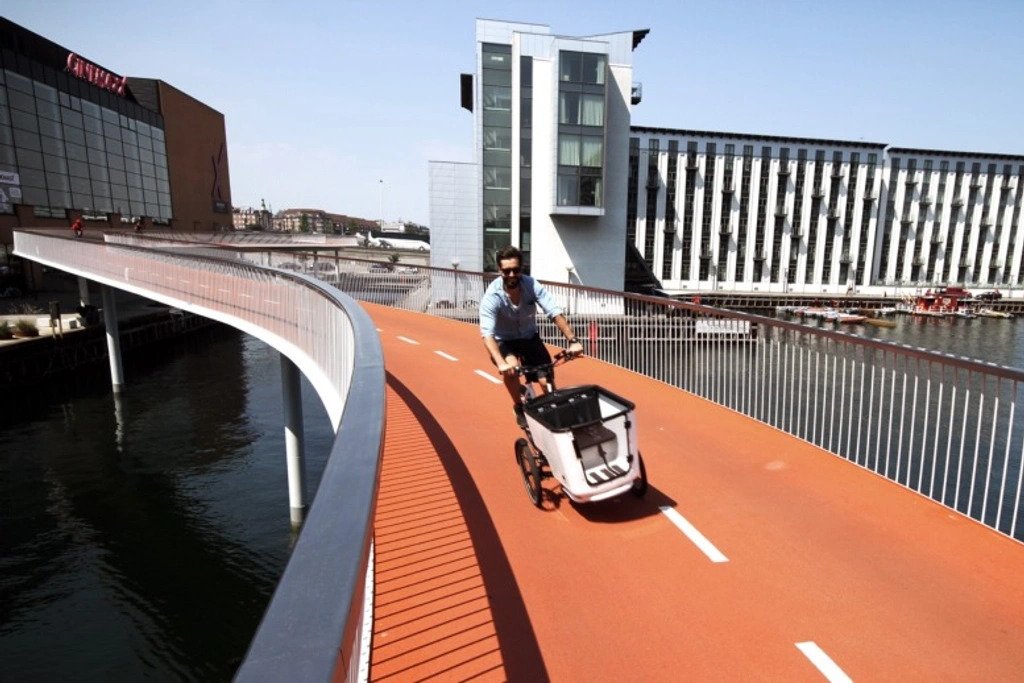 Our first destination is Denmark's capital, Copenhagen. The city boasts of the beautiful Cykelslangen Bridge.
Our first destination is Denmark's capital, Copenhagen. The city boasts of the beautiful Cykelslangen Bridge.
Additionally, the trail links the various regions, providing bikers attempting to ride their bikes around the bay with several exciting alternatives. Due to its small profile and the fact that it links the east and west sides of the city, tourists refer to it as "The Bicycle Snake."
The doors to Cykelslangen were opened to the public by June 2014. Since then, it has been a reputed, pleasant, and accessible holiday spot among riders from all corners of the world. It is a structure created by Dissing+Weitling.
Ecoduct on Longkamp Highway
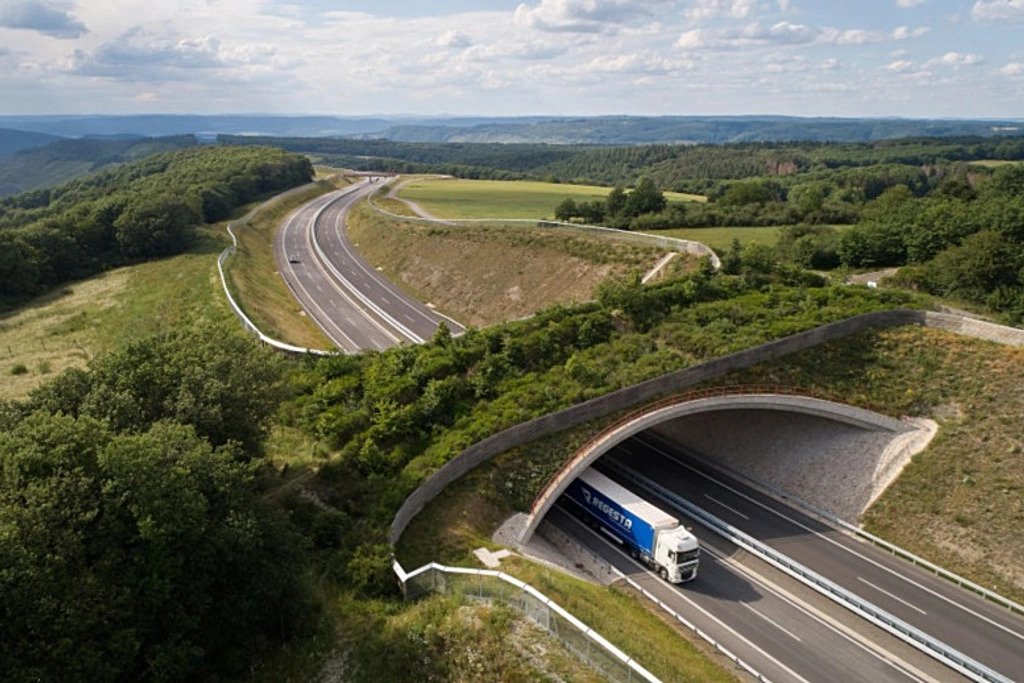 In the German town of Longchamp, the administration is now building unique traffic patterns on a motorway. Animals may safely traverse highways that humans have constructed securely.
In the German town of Longchamp, the administration is now building unique traffic patterns on a motorway. Animals may safely traverse highways that humans have constructed securely.
One of the numerous benefits that Ecoduct offers is this. Many believe such initiatives improve the appearance of lengthy road sections and reduce the likelihood that an automobile would collide with a wild animal. In addition to this specific eco-bridge, Germany is home to fourteen more such structures, all of which cooperate to maintain the security of the local flora and fauna.
There are nine animal underpasses throughout the path, aside from the two landscape tunnels located at various places. The dense vegetation that lines this path to the goal covers it from all sides, including the surface.
Tokyo Highway Junction
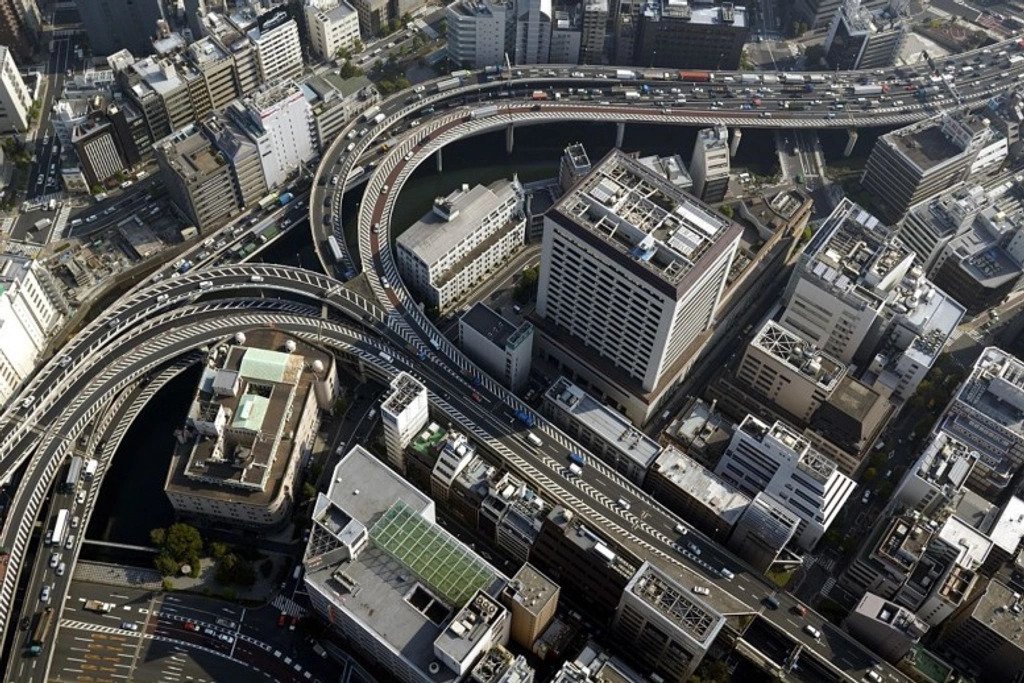 Tokyo's Y-shaped highway interchange illustrates the unusual road infrastructure you can see in several regions of the world. The design of the route included several substantial bends and lane mergers.
Tokyo's Y-shaped highway interchange illustrates the unusual road infrastructure you can see in several regions of the world. The design of the route included several substantial bends and lane mergers.
When you view it from above, it can appear to be a perplexing mess, but the truth is, it's there to help you! The design of this roadway ensures that traffic always moves in the same direction. Even though there are ramps leading to the location on both sides of the intersection, most city dwellers shouldn't have too much trouble with this merging.
They split the interchange into portions, some of which only had one lane and others had two lanes. We have no choice except to beg for protection on this winding route without blinkers.
The Wadebridge
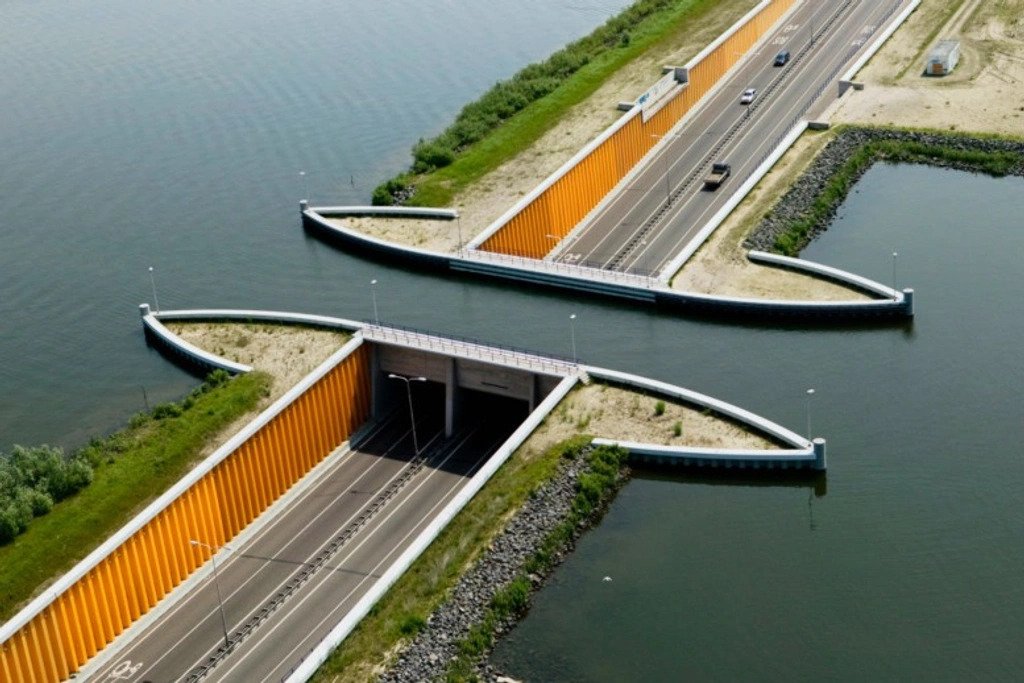 The indoor waterfall at Singapore's Jewel Changi Airport's Rain Vortex smashed all previous records. Additionally, the attraction offers an inside forest! The Wadebridge is another name for this building. It crosses across Veluwemeer Lake. Water vehicles may now cross highways, trains, rivers, and valleys thanks to this structure, which is 257 meters and 82 feet long.
The indoor waterfall at Singapore's Jewel Changi Airport's Rain Vortex smashed all previous records. Additionally, the attraction offers an inside forest! The Wadebridge is another name for this building. It crosses across Veluwemeer Lake. Water vehicles may now cross highways, trains, rivers, and valleys thanks to this structure, which is 257 meters and 82 feet long.
Near Harderwijk in the Netherlands, National Highway 302 passes across the middle of an aqueduct. Since it became accessible for use in 2002 for both land and maritime transport, there has been a considerable increase in utilization. Do you share my opinion that this is a magnificent piece of art?
We wonder how much longer people in wheeled vehicles must halt and wait before they are allowed to cross the road when there is a boat nearby.
Skytrain Amidst Nature
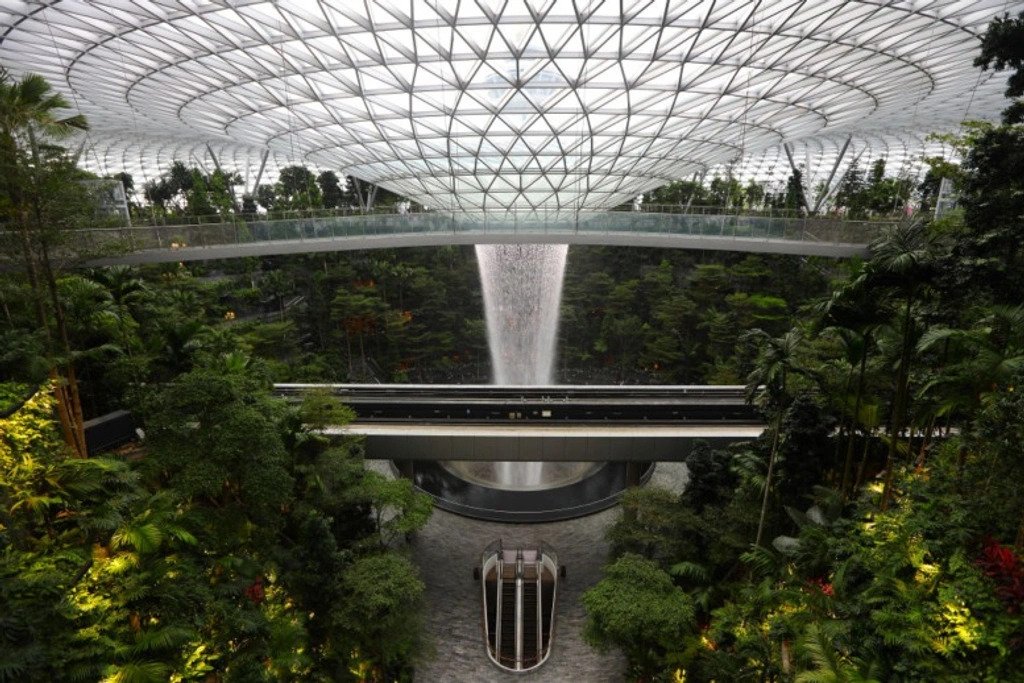 The indoor waterfall at Jewel Changi Airport's Rain Vortex smashed all previous records. Additionally, the attraction offers an inside forest! You may now travel between terminals at the airport via the Skytrain.
The indoor waterfall at Jewel Changi Airport's Rain Vortex smashed all previous records. Additionally, the attraction offers an inside forest! You may now travel between terminals at the airport via the Skytrain.
In the region directly around the Vortex of Destruction, one may come across various tree and plant species that are not native to this planet.
The three passenger terminals, the hotel, the shop buildings, and the grounds are all visible to passengers as the train passes through the station. Given how much above your surroundings you are, you must have a proper understanding of where you are right now.
Brutalist Apartments
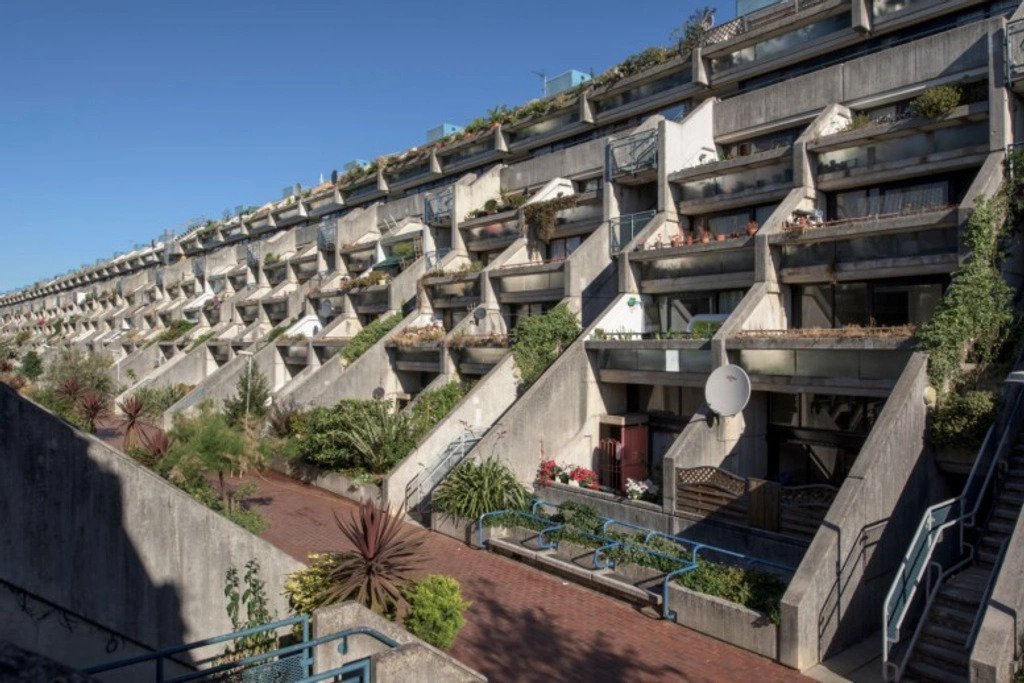 The first Brutalist buildings in the United Kingdom appeared in the 1950s, after World War II. The accompanying image of flats in London's Camden neighborhood is an excellent example.
The first Brutalist buildings in the United Kingdom appeared in the 1950s, after World War II. The accompanying image of flats in London's Camden neighborhood is an excellent example.
The materials used to develop this structure include brick, concrete, and other exposed building components, including steel, glass, and wood. A guy named Reyner Banham, an architectural critic, is among many who have investigated the history of the infrastructure and found that the in-issue design is not at all chilly.
Regardless of whether or not these Camden homes are still in demand, it is impossible to deny that they stand out from the neighborhood's other dwellings.
Storseisundet Bridge
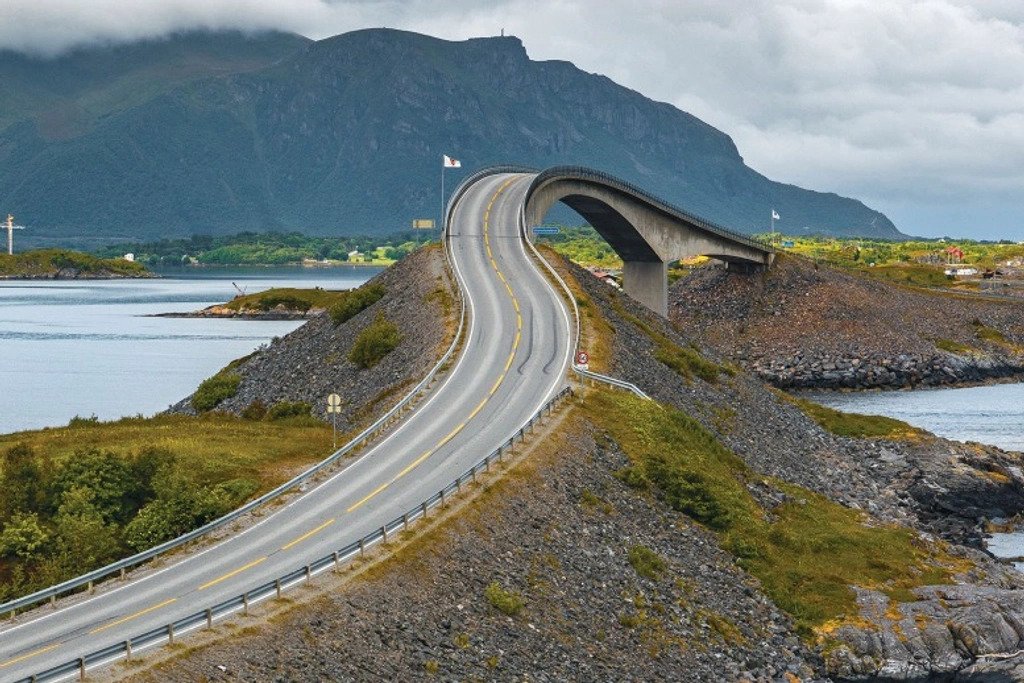 Eight bridges link Norway's "Atlantic Road" to the mainland, including the Storseisundet Bridge.
Eight bridges link Norway's "Atlantic Road" to the mainland, including the Storseisundet Bridge.
The 850-foot-long Storseisundet Bridge is twisting due to its multiple bends. According to the documents recorded during the construction process, water-related difficulties came up throughout the development phase. This process lasted six years.
It creates an optical illusion that would stop anyone in their tracks. Drivers may believe their cars will fly off the road and into the air as they descend this hill due to the terrain's slope and the road's angle.
Railway of Wuppertal Suspension
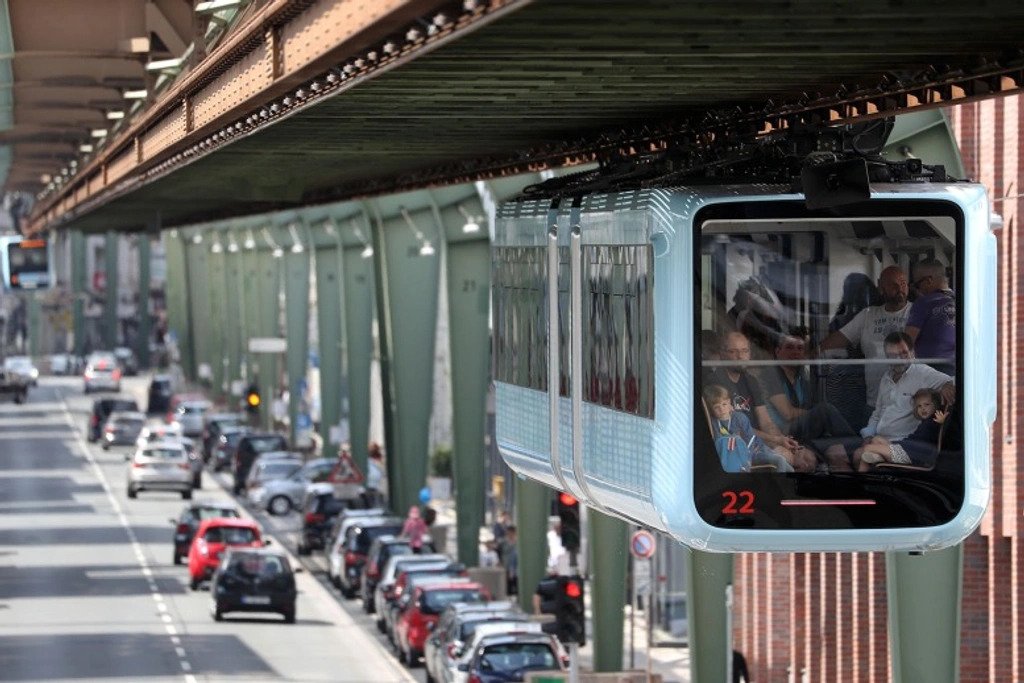 The oldest elevated electric railway in the world with floating carriages is the Wuppertal Suspension Railway. The Eugen Langen Monorail Overhead Conveyor System was the final name for this construction.
The oldest elevated electric railway in the world with floating carriages is the Wuppertal Suspension Railway. The Eugen Langen Monorail Overhead Conveyor System was the final name for this construction.
Before eventually approving it, they repeatedly questioned whether the construction design was viable three separate times. The Wuppertal Suspension Railway can carry over 25 million passengers annually, with a daily average of 80,000 passengers.
Passengers have a bird's eye perspective of the areas they are going through as the train glides roughly 40 feet above the earth's surface.
Streams at Fishway
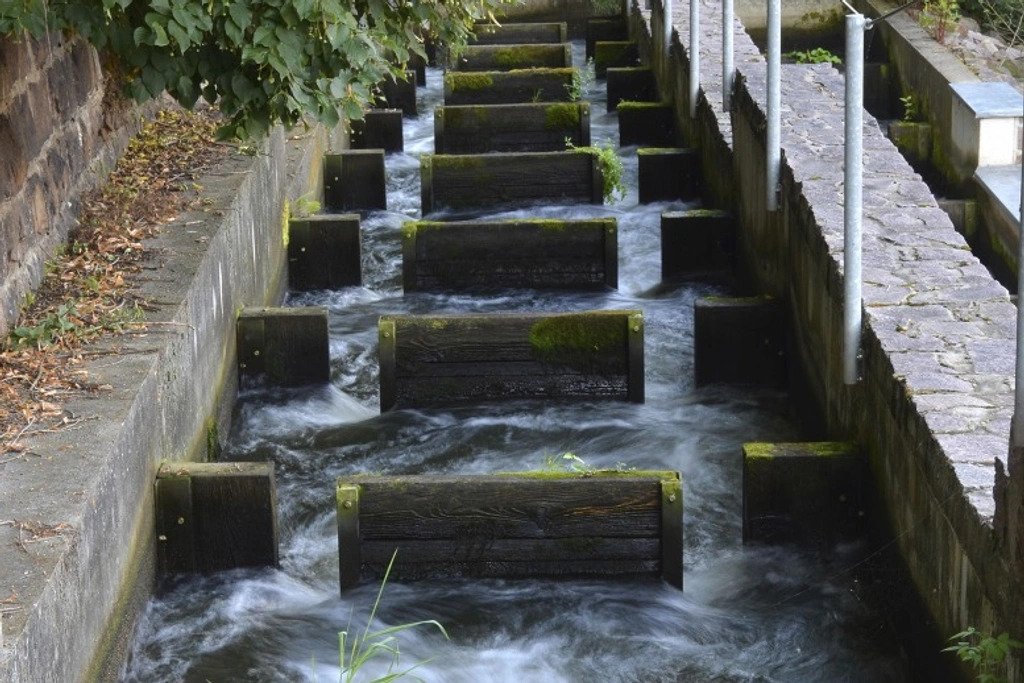 Different names for the same structures, such as fish stairs, fishways, and fish ladders, are frequently seen near natural obstacles like waterfalls, dams, and streams. These features can aid fish in navigating these purely natural barriers.
Different names for the same structures, such as fish stairs, fishways, and fish ladders, are frequently seen near natural obstacles like waterfalls, dams, and streams. These features can aid fish in navigating these purely natural barriers.
Assuring the salmon's ability to survive was one of the most important factors taken into account when developing the infrastructure. Nevertheless, we are perplexed by this. The fishways' shape enables switching between streams easier for salmon and other fish with swimming abilities.
They used the plan at the Pawtuxet Falls Dam in Rhode Island. It was here that we started our journey. The invention has changed since it was publicly available because of user input.
Metro Station in Saint Petersburg
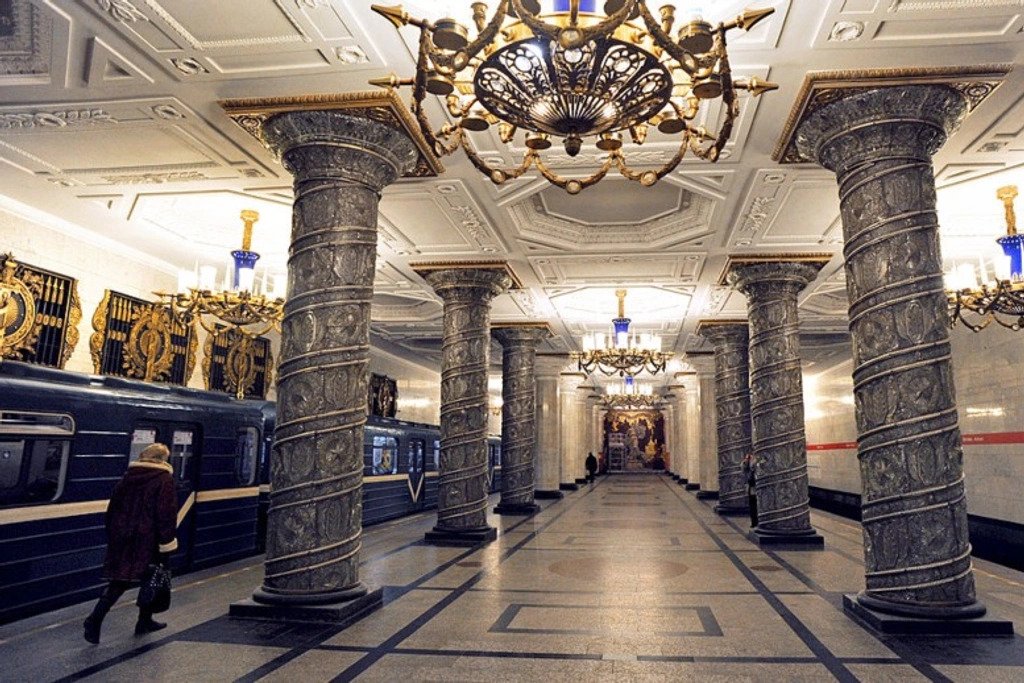 In the metro station in St. Petersburg, Russia, there is magnificent tile work, columns, and chandeliers made of ornate gold and gold that have been carved and embossed.
In the metro station in St. Petersburg, Russia, there is magnificent tile work, columns, and chandeliers made of ornate gold and gold that have been carved and embossed.
In an odd turn of events, the army built a shelter during World War II for people. It eventually turned into one of the world's busiest railway stations.
In addition, it is a major city in Russia. According to reports, the Saint Peters Metro serves over 2 million people daily at 72 stations, seven transfer hubs, and other locations.
Bridge of Bhumibol
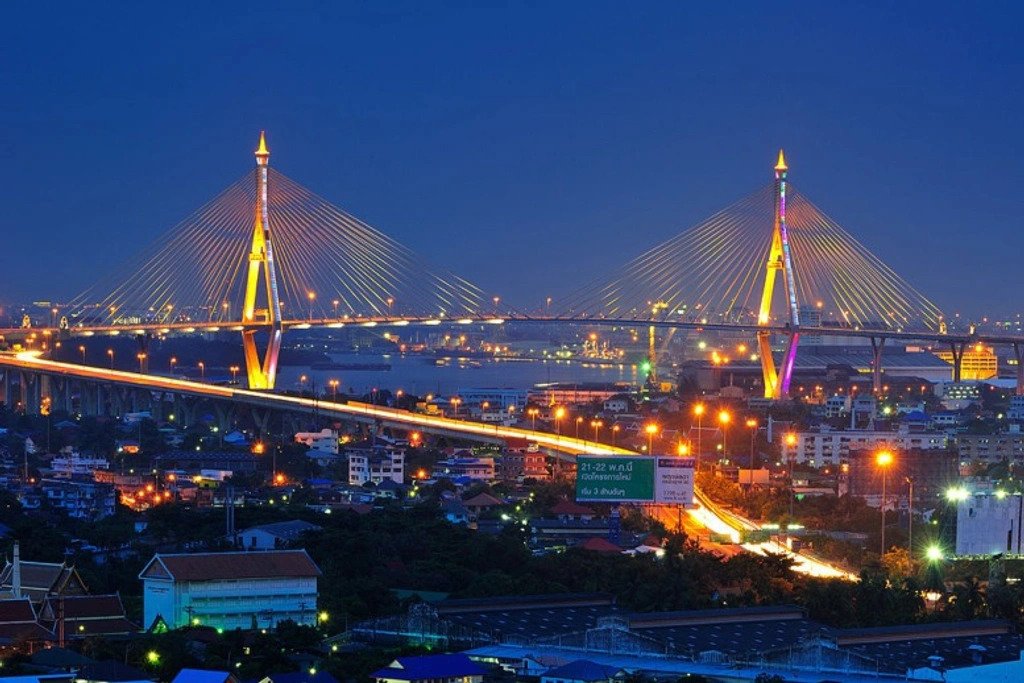 The Bhumibol Bridge is also known as the Industrial Ring Road Bridge. The bridge rises 164 feet above the planet's surface thanks to the massive cable links. Bangkok, Thailand's capital, is home to this magnificent structure.
The Bhumibol Bridge is also known as the Industrial Ring Road Bridge. The bridge rises 164 feet above the planet's surface thanks to the massive cable links. Bangkok, Thailand's capital, is home to this magnificent structure.
Historical records state that the royal family gave the bridge its name. King Bhumibol Adulyadej was chosen in 2009 to be the bridge's honorary patron.
Only four-wheeled vehicles are allowed on this bridge. Therefore, if you ride a motorbike and want to cross it, you'll need to park it and switch to driving a car. It is for everyone's safety.
Botanical Garden at Atocha Train Station
 In Spain, the Atocha Train Station is home to a beautiful botanical garden that visitors may take advantage of while they are there. The first railway station built in the city is not only the busiest but also the largest in Madrid.
In Spain, the Atocha Train Station is home to a beautiful botanical garden that visitors may take advantage of while they are there. The first railway station built in the city is not only the busiest but also the largest in Madrid.
Throughout its existence, it underwent several restorations, the most important of which happened in 2004. The 2004 train catastrophe that claimed 191 lives catalyzed even further advancements.
Since then, the plaza of the Atocha Train Station has had a beautiful garden, and the building itself now has a stream running through it. It represents water as a metaphor for life. It was in memory of those who had lost their lives within its walls.
Gordon Dam in Tasmania
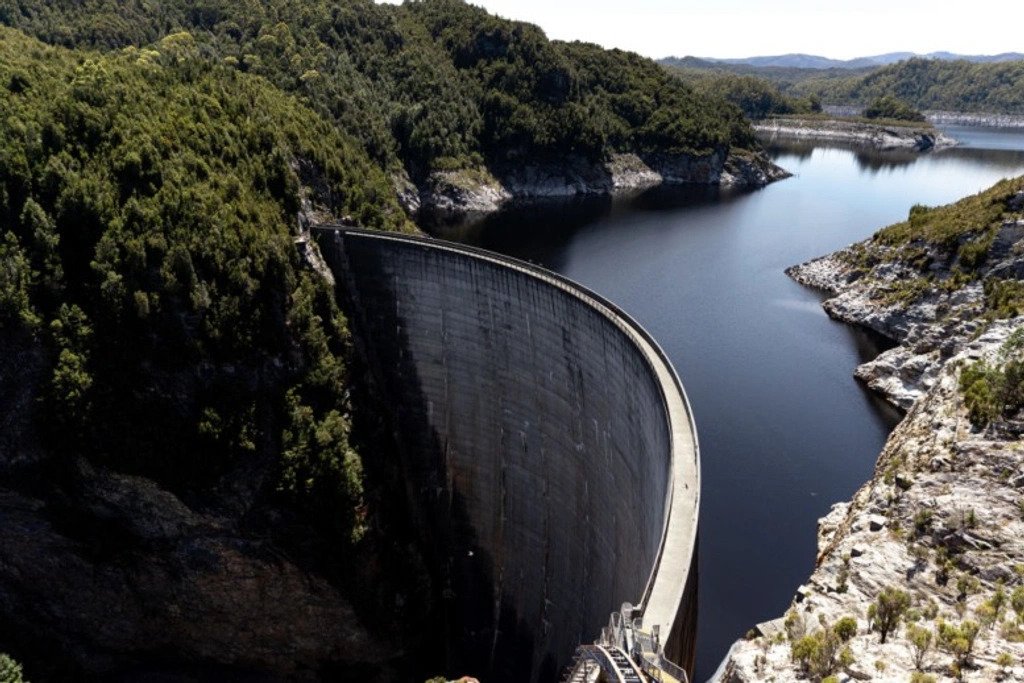 The Gordon Dam in Tasmania, Australia, will be our next trip. The Gordon River forms a massive concrete curve that acts as a barrier. Tasmania is in Oceania.
The Gordon Dam in Tasmania, Australia, will be our next trip. The Gordon River forms a massive concrete curve that acts as a barrier. Tasmania is in Oceania.
The dam, now the fifth-tallest on the continent, has grown since 1974. It stands up to a length of 650 feet and a height of 460 feet. The dam won several awards in 2020, one of which is the coveted title from the Engineering Heritage Recognition Program.
Engineers Australia, a non-profit organization, has designated the Gordan Dam as a National Engineering Landmark because of its enormous potential.
Bridge at Beipanjiang
 The Chinese government spent a portion of its 2016 budget on building the Beipan River Bridge, which stands 1,850 feet above the Beipan River and is the tallest in the world. The Duge Bridge is another name for the span that connects the Chinese provinces of Yunnan and Guizhou. Its original name, nevertheless, is the Beipanjiang Bridge.
The Chinese government spent a portion of its 2016 budget on building the Beipan River Bridge, which stands 1,850 feet above the Beipan River and is the tallest in the world. The Duge Bridge is another name for the span that connects the Chinese provinces of Yunnan and Guizhou. Its original name, nevertheless, is the Beipanjiang Bridge.
Even though it is tall, its length is equally as good as its height. It used to take four and a half hours to go from one province to another before this flyover came into existence.
It was successful because it chose the straight path, which covered a distance of 4,400 feet in total.
Project for Crescent Dunes Solar Energy
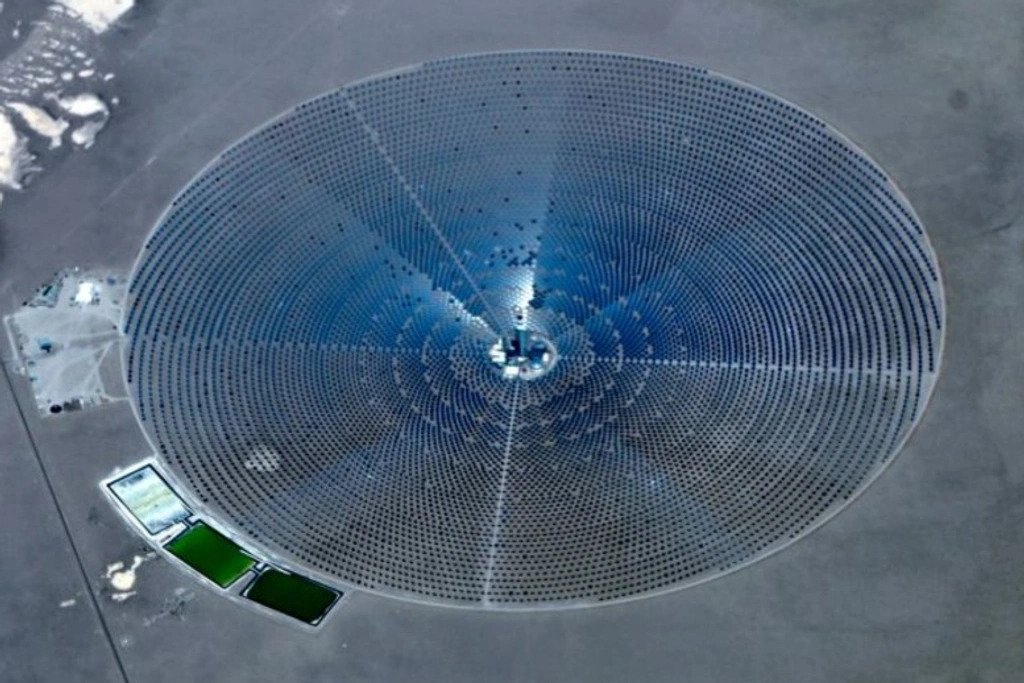 The project is known as the Crescent Dunes Solar Energy Project. This structure, measuring over 3.2 kilometers, was made by spiraling 10,000 mirrors together. What is this thing exactly?
The project is known as the Crescent Dunes Solar Energy Project. This structure, measuring over 3.2 kilometers, was made by spiraling 10,000 mirrors together. What is this thing exactly?
The first solar power plant with a central receiver tower and energy storage technology was this cluster of reflectors that resembled a landed UFO. It was built n the 1960s in California.
The project is situated in Tonopah, Nevada, and has a capacity of 110 megawatts and 1.1 gigawatt-hours. Although this equipment is in fantastic shape, it hasn't generated any solar electricity for some time. Therefore, it doesn't seem like anything will change for the better, which is a great shame.
Bridge across Clifton Suspension
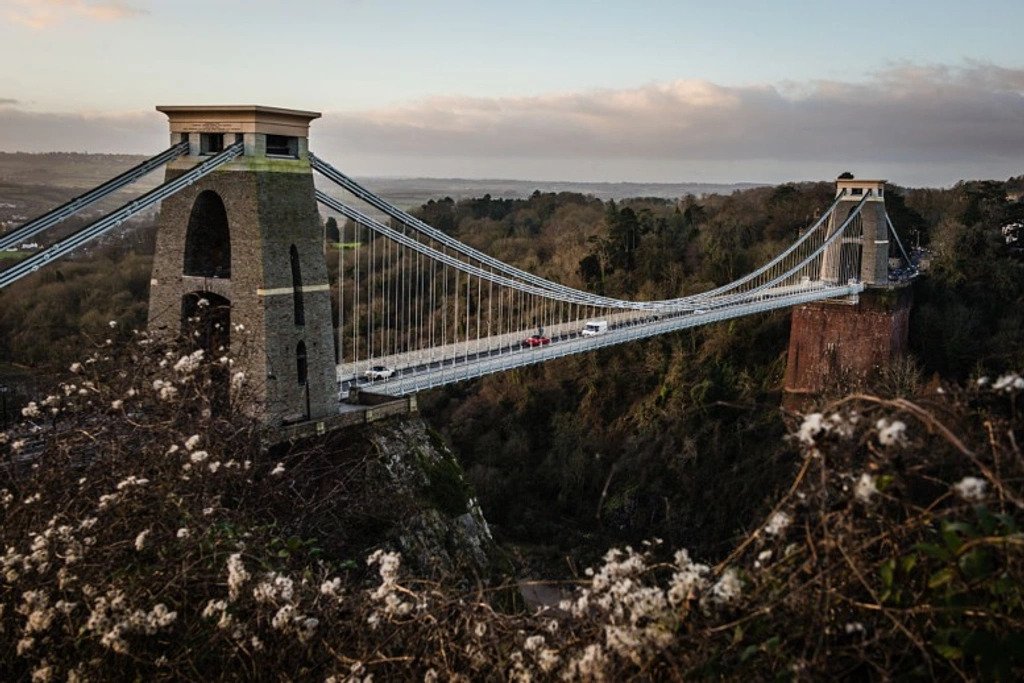 The Clifton Suspension Bridge is a well-known suspension bridge in Bristol, England. Because it is 1,352 feet long and reaches 331 feet above high tide, the structure may cross the River Avon.
The Clifton Suspension Bridge is a well-known suspension bridge in Bristol, England. Because it is 1,352 feet long and reaches 331 feet above high tide, the structure may cross the River Avon.
Another remarkable aspect of the building is the bridge, which offers visitors a breathtaking view of the river below. The bridge has appeared on several stamps, postcards, and other souvenirs.
If you don't live in England, you might not be aware that though they look the same, they used different methods to build them.
Circular Village Communities
In Denmark's pie-slice-shaped village communities, every house and yard is roughly the same size.
Imagine being in one of these eateries and suddenly realizing that you have no idea where you are. It is impossible to say whether this unique architecture authorizes the block parties or if just the first bus in line is allowed to stop at each circle.
Regardless of the answers to our inquiries, it is probable that the residents of this area are a close-knit group.
The Dam at Houtribdijk
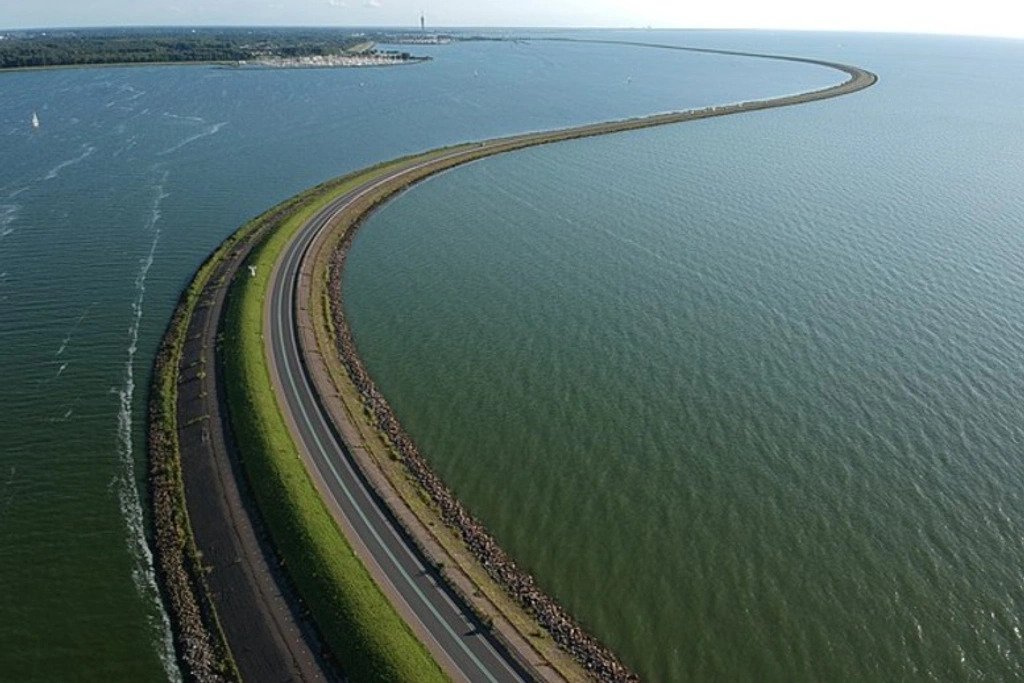 The construction information indicates the wonder of infrastructure built between 1963 and 1975. The Houtribdijk Dam is the name by which people refer to the structure.
The construction information indicates the wonder of infrastructure built between 1963 and 1975. The Houtribdijk Dam is the name by which people refer to the structure.
The N302 highway connects the Dutch cities of Lelystad with Enkhuizen across 30 kilometers (18.6 miles). Trintelhaven, an emergency harbor midway during the route with a radio station and a café, allows travelers to take a break.
Houtribdijk gives access to 8,500 different types of transportation per day on average. On each side of the dam, there is such a spectacular view. Therefore, it is understandable why.
Shalu Landscape Leisure Trail
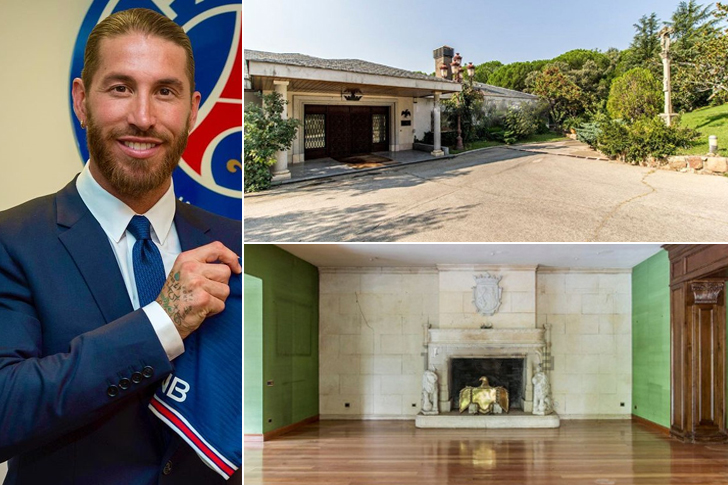 It gives the impression that this stairway is simply another promenade until you discover it under an underpass of a busy motorway. There is also a lot of beautiful greenery there.
It gives the impression that this stairway is simply another promenade until you discover it under an underpass of a busy motorway. There is also a lot of beautiful greenery there.
Even though it might not seem like this area has much to offer tourists, Taichung City in Taiwan is a favorite travel destination.
Despite being referred to as Shalu Leisure, the number of stairwells in this image makes it appear more like a strenuous exercise than a leisurely walk. Regardless, we shall check this plant-lined route off our list.
Falls at Dudhsagar
 It was tough to accept it was feasible after we saw this breathtaking view for the first time. The Dudhsagar Falls in Goa, India, has four distinct waterfall levels connected by a bridge.
It was tough to accept it was feasible after we saw this breathtaking view for the first time. The Dudhsagar Falls in Goa, India, has four distinct waterfall levels connected by a bridge.
These waterfalls, also known as the "Sea of Milk," are an incredible sight you can't miss. Tourists and locals can use the transportation service provided by the Bhagwan Mahavir Wildlife sanctuary to get to this breathtaking illustration of one of the marvels of nature found on this planet.
While writing this, that window was the only way to see the stunning Sea of Milk.
The Delta Works
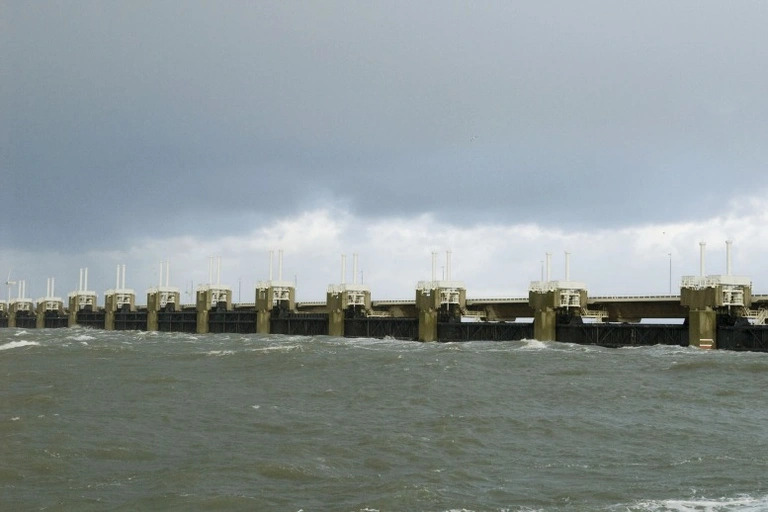 Delta Works in the Netherlands is one of the Seven Modern World Wonders. The storm surge barrier is the largest one ever constructed. It consists of 13 different structures! The American Society of Civil Engineers presented it with this prize.
Delta Works in the Netherlands is one of the Seven Modern World Wonders. The storm surge barrier is the largest one ever constructed. It consists of 13 different structures! The American Society of Civil Engineers presented it with this prize.
It is a general perception that the wall won't begin to work until the water level rises to a point around 10 feet higher than the average seal height. It took more than 40 years to build Delta Works. The work didn't finish until 1997.
However, how much time and money would it take to complete a job of this nature? One of the biggest estimations was made in 2012 by many sources, who estimated that the entire cost would be close to $13 billion.
Lofoten Archipelago
 The Lofoten archipelago of Norway is 1,900 nautical miles or around 2,400 kilometers away from the North Pole. This location gives off a peaceful, serene vibe reminiscent of a movie still.
The Lofoten archipelago of Norway is 1,900 nautical miles or around 2,400 kilometers away from the North Pole. This location gives off a peaceful, serene vibe reminiscent of a movie still.
People in this area reside in the Arctic Circle, where things become interesting. Due to the neighborhood's position, its residents contend with some of the most dramatic temperature changes. It seems to be a still from a movie as a result.
Despite his rejection, D'Anjou, a biogeochemist, stated that "there is evidence of human settlement extending back at least 11,000 years."
The Viaduc de Millau
 The Millau Viaduct, also known as the Viaduc de Millau, is a massive cable-stayed bridge that spans the Tarn River Gorge Valley in France.
The Millau Viaduct, also known as the Viaduc de Millau, is a massive cable-stayed bridge that spans the Tarn River Gorge Valley in France.
The location of this bridge is lofty, high above the clouds. According to an official proclamation, the four-lane overpass was the world's highest bridge in 2020 due to its astounding height of 1,104 feet. Despite having a $424 million construction budget, the Millau Viaduct received another award for excellence.
In 2006, the International Association of Bridge and Structural Engineering presented the massive structure with the Outstanding Structure Award (IABSE).
Adaptive Mass Damper
 Some communities refer to this tuned mass damper as a harmonic absorber. Initially, the silencer was in the Taipei 101 Skyscraper, but they used it in several other tall structures afterward.
Some communities refer to this tuned mass damper as a harmonic absorber. Initially, the silencer was in the Taipei 101 Skyscraper, but they used it in several other tall structures afterward.
In these facilities, they use the damper to reduce unfavorable mechanical vibrations. The movement of moving elements creates these vibrations.
These one-of-a-kind spring-filled structures can be installed in buildings to protect them from distress, damage, or structural failure. They are distinctive in that they contain springs. Along with power transmission facilities and huge vehicles, such towering buildings also house a variety of mass dampers of different sorts.
Pont de Normandie
 Located in France, the Pont de Normandie is the name of the Normandy Bridge in its native tongue.
Located in France, the Pont de Normandie is the name of the Normandy Bridge in its native tongue.
It is the longest bridge in Paris and the longest bridge in France, spanning the Seine River for an incredible 7,032 feet. The bridge offers a magnificent vantage point from where you can view the river's course as it jumps toward the ocean. There is a walkway that runs perpendicular to the overpass's slope orientation.
Although a blue sign in the lower right corner of the image indicates a pedestrian route, we can only picture the calf workout needed to finish this expedition on foot. Despite this, Michel Virlogeux, the bridge's architect, produced a work of art that has a striking appearance.
Side Girder Bridge
 After a construction phase from 1998 until 2002, Belgium's Sart Canal Bridge was finally open to traffic.
After a construction phase from 1998 until 2002, Belgium's Sart Canal Bridge was finally open to traffic.
The bridge's website states that the canal is 1,634 feet long and has a capacity of 80,000 tonnes of water. The waterway also contains an additional 80,000 tonnes of water.
They constructed the astronomically costly Side Girder Bridge along the Sart Canal using reinforced and prestressed concrete. Isn't this a magnificent and eye-catching work of art?
Tunnel of Troms
 Nowhere else in the world is there a construction like Norway's Tromsysund Tunnel. The communities of Karmy and Tysvaer in Rogaland, Norway, have a circular road that seems to be in the water.
Nowhere else in the world is there a construction like Norway's Tromsysund Tunnel. The communities of Karmy and Tysvaer in Rogaland, Norway, have a circular road that seems to be in the water.
The two tubes are connected by fifteen service tunnels altogether. Even though it frequently has traffic because of its popularity, this tunnel is far from typical. The tunnel's lowest point is 335 feet below sea level today.
Additionally, it creates a link between the island and the suburbs.
The Heated Streets of Holland
 Have you ever been to Holland in Michigan to get things going? Do you know that the area can melt one inch of snow in an hour at temperatures as low as 20 degrees Fahrenheit?
Have you ever been to Holland in Michigan to get things going? Do you know that the area can melt one inch of snow in an hour at temperatures as low as 20 degrees Fahrenheit?
The second fascinating fact is that. If the answer to these queries is a resounding "no," we'll look into why. For instance, the city of Holland in Michigan has heated its streets and sidewalks expressly to melt snow and ice.
Wastewater from the adjacent nuclear power plant is essential for the intricate system. It travels through a 120-mile network of plastic piping to heat the pavement (seen above).
Environmental Highway Bridge
 Turkey's Alacati-Zaytinler distance includes an ecological bridge that spans the Izmir-Cesme Highway amid the road. With the aid of this technique, animals can move from one side to the other safely without endangering their lives.
Turkey's Alacati-Zaytinler distance includes an ecological bridge that spans the Izmir-Cesme Highway amid the road. With the aid of this technique, animals can move from one side to the other safely without endangering their lives.
Although it might seem simple, this task is not easy. But thanks to the bridge's completion, humans and animals are now much better protected on this highway.
Additionally, it is an eco-friendly method to offer a wide range of holiday alternatives in a part of the globe that is naturally beautiful. The right-side walkway seems like people may use it as a walking route.
Cactus Mobile Tower
 Numerous mobile phone towers exist in deserts, particularly near Tucson, Arizona. However, some businesses have created substitutes appropriate for a desert setting in place of a metal tower in an open area.
Numerous mobile phone towers exist in deserts, particularly near Tucson, Arizona. However, some businesses have created substitutes appropriate for a desert setting in place of a metal tower in an open area.
Mobile phone towers are present throughout the state of Arizona. Additionally, twenty feet tall artificial cacti exist. They almost look like giant cacti.
The same concept is a reality. In Florida, palm trees are so prevalent that they almost touch the rooftops of people's homes.
Confederation Bridge
 It was not a light decision that New Brunswick and Prince Edward Island would construct an eight-mile-long bridge together. People used to go by boat year-round before this happened.
It was not a light decision that New Brunswick and Prince Edward Island would construct an eight-mile-long bridge together. People used to go by boat year-round before this happened.
However, the idea began to gain momentum and became more widespread in the 1980s. By May 31, 1997, the project was over. The bridge was opened to the public that day. Almost 5,000 people contributed to its success.
It continues to be one of Canada's most impressively constructed pieces of infrastructure. Additionally, it represents the union of the country's western and eastern regions.
Habitat 67
 We're supposed to halt at Montréal, Canada, next. Sadly, Montréal is much farther to the West from our previous stop.
We're supposed to halt at Montréal, Canada, next. Sadly, Montréal is much farther to the West from our previous stop.
By carrying out a sizable building project, a rising Canadian architect who had previously attended McGill University effectively propelled Habitat 67 to a prominent place in the architectural community. Our next stop on this journey will be in the Canadian city of Montréal.
While still a student at McGill University, a future architect became well-known for his work on Habitat 67. Many people consider Habitat 67 as one of the most significant structures constructed in Canada during the 20th century.
Knot Bridge
 The Lucky Knot Bridge is a span located in Changsha's Meiki Lake District. This bridge spans the Dragon King Harbor River. It is also known as "Knot Bridge" or "Knot Footbridge."
The Lucky Knot Bridge is a span located in Changsha's Meiki Lake District. This bridge spans the Dragon King Harbor River. It is also known as "Knot Bridge" or "Knot Footbridge."
The well-known international architectural firm NEXT architects created the designs with a specific objective. The company in charge of its construction indicated that it was built in 2016 to offer services to visitors.
There is no vehicular access to the footbridge. However, the traditional Chinese knotting methods had an impact on the design. It provides a unique chance for architectural research and acts as a vital connection between the towns on either side of the river.
Puente de Laguna Garzon
 The small town of Garzón, situated in southern Uruguay, is home to the bridge that spans the Laguna Garzón. A renowned Uruguayan architect named Rafael Violy developed a creative solution to the issue of vehicle access in the coastal lagoon.
The small town of Garzón, situated in southern Uruguay, is home to the bridge that spans the Laguna Garzón. A renowned Uruguayan architect named Rafael Violy developed a creative solution to the issue of vehicle access in the coastal lagoon.
He drew inspiration for this bridge's design from various ideas and concepts. It contributed by providing a visually appealing piece of architecture to the neighborhood.
Because of this new option made available to commuters, they no longer had to wait for the ferry service to resume when the weather was good. Finally, during the building of the bridge, precautions were in place to ensure the security of pedestrians.
Museum of Contemporary Art, Niteroi
 Given the size and complexity of the project in Rio de Janeiro, Brazil, many thought that the Niterói Contemporary Art Museum was a labor-intensive enterprise.
Given the size and complexity of the project in Rio de Janeiro, Brazil, many thought that the Niterói Contemporary Art Museum was a labor-intensive enterprise.
The name Niterói comes from the neighborhood where it is situated. Visitors from all corners of the globe come to see it because of its stunning architecture. According to Architect Magazine, approximately one million tonnes of concrete and 300 laborers worked to complete the project.
And if you listen to what the locals there have to say, you'll understand that no picture could do the building justice. Despite this, we will do so for the time being and believe what they say.
Dam at Inguri
 The highest arched dam in the world, according to Britannica, is the Inguri Dam in Western Georgia. It came into being in the 1980s to regulate the water flow from the Caucasus Mountains down to the Black Sea,
The highest arched dam in the world, according to Britannica, is the Inguri Dam in Western Georgia. It came into being in the 1980s to regulate the water flow from the Caucasus Mountains down to the Black Sea,
In addition to its size and beauty, the institution gives back to its neighborhood. The nearly 300-meter-high dam connects to a five-unit power system. The system can produce 1,300 megawatts of electricity at total capacity.
Additionally, it helps the country grow by providing an estimated 40% of its energy needs. Want more? Scroll down.
Lego-Brücke
 The Lego-Brücke, often known as the Lego Bridge, can be found in Wuppertal, a city in northwest Germany. This particular piece of infrastructure confuses many who stumble upon it by mistake. Check out why for yourself.
The Lego-Brücke, often known as the Lego Bridge, can be found in Wuppertal, a city in northwest Germany. This particular piece of infrastructure confuses many who stumble upon it by mistake. Check out why for yourself.
Martin Heuwold completed assembling the project's aesthetic components in 2011. However, the bridge is not very remarkable in terms of the city's infrastructure.
Martin's new color scheme for the bridge drew inspiration from his daughter's childhood favorite toy. He received the German Fassadenpreis Advancement Prize in 2012 for his dedication to this sector.
Twin Sails Bridge
 The Twin Sails Bridge, situated in Poole, Dorset, connects the towns of Hamworthy and Poole.
The Twin Sails Bridge, situated in Poole, Dorset, connects the towns of Hamworthy and Poole.
The bridge's design, inspired by the aquatic traversers, allows ships to pass below. The bridge resembles a sail when they hoist its two distinct sections.
They received praise for the city's and its bridges' architectural design, which caught everyone's attention, but this praise was prohibitively expensive. Several sources estimate the total amount to be close to $25.5 million.
Guggenheim Museum
 The Guggenheim Museum in Bilbao, Spain, was created by famous Canadian-American architect Frank Gehry. Frank Gehry built the museum. People hailed it as one of the most beautiful buildings in the whole world and a product of the 20th century.
The Guggenheim Museum in Bilbao, Spain, was created by famous Canadian-American architect Frank Gehry. Frank Gehry built the museum. People hailed it as one of the most beautiful buildings in the whole world and a product of the 20th century.
Even if it has a striking look, it may still achieve the main objective of its creation. In all, the picture's curving high ceilings occupy more than 250,000 square feet of area.
Despite this, they may still use the remaining 97,000 square feet for the collections. Furthermore, the building's construction was not inexpensive. A figure of up to 89 million dollars is not less from any perspective.
The Lotus Temple, New Delhi
 The Lotus Temple in New Delhi is just one of the many extraordinary structures whose designers drew inspiration from the surrounding natural environment. The architect Fariborz Sahba, who was in charge of designing this unique Baha House of Worship, drew inspiration from the lotus flower.
The Lotus Temple in New Delhi is just one of the many extraordinary structures whose designers drew inspiration from the surrounding natural environment. The architect Fariborz Sahba, who was in charge of designing this unique Baha House of Worship, drew inspiration from the lotus flower.
As a result, the building will have nine sides and be spherical. Aside from that, Sahba fashioned the building's façade into a lotus flower with 27 white Grecian marble petals.
A constant presence of aquatic flowers was also visible throughout the property. The property has nine ponds dispersed around it and a large garden.
National Stadium of Beijing
 Our next destination is Beijing, where we will visit the "Bird's Nest" stadium, a complex structure partially influenced by the Summer Olympics in Beijing, China, in 2008.
Our next destination is Beijing, where we will visit the "Bird's Nest" stadium, a complex structure partially influenced by the Summer Olympics in Beijing, China, in 2008.
After significant deliberation, the Swiss architectural firm Herzog & de Meuron completed their project. The design included random strands of steel concealing the support columns without using the retractable roof.
The project's estimated cost was more than $425 million in total. Fortunately, it turned out that the expense of traveling to the international event was well worth it.
The Pop Culture Museum

The next Seattle landmark we'll look at is this prestigious building. The name of the architect who designed it has already come up in this roundup.
Frank Gehry, the same architect who created the Guggenheim Museum in Spain, is credited for creating the Museum of Pop Culture. The immersive cultural center was the first project Gehry worked on in the Pacific Northwest, and he was the architect who came up with the concept.
Furthermore, he probably issued a proclamation. The structure occupies 140,000 square feet of space overall and 35,000,000 square feet of land in Seattle's downtown.
Cadet Chapel at the United States Air Force Academy
 It's probably not easy to stand out in a region as picturesque as Colorado since there are many other natural treasures around you. However, the United States Air Force Academy's Cadet Chapel has succeeded in standing out.
It's probably not easy to stand out in a region as picturesque as Colorado since there are many other natural treasures around you. However, the United States Air Force Academy's Cadet Chapel has succeeded in standing out.
All cadets can attend chapel services, which can meet their needs. It is the most popular manufactured attraction in the state, based on information provided on the website. On the other hand, the event's inclusiveness may entice people to attend.
Worship facilities for followers of the Catholic, Jewish, and Buddhist faiths are present in this majestic building. As a result, the plant is now closed for upkeep. However, 2023 is supposedly the preferred time for the restart.
Marie-Elisabeth-Lüders-Haus
 The Marie-Elisabeth-Lüders-Haus is in Berlin, which also happens to be the city that acts as the seat of government for Germany, in the well-known national government area.
The Marie-Elisabeth-Lüders-Haus is in Berlin, which also happens to be the city that acts as the seat of government for Germany, in the well-known national government area.
Stephan Braunfels, the building's architect, was in charge of creating a unique design for the structure. And ever since it got over in 2003, locals and tourists from other nations have been drawn in by this magnificent structure. Do you think there is anything else you should know?
You can see one of the Great Hall's two enormous circular entrances. You can find the other entrance on the opposite side of the space. The structure bears the name of a significant female rights activist from German history connected to the installation.
Water Bridge in Magdeburg
 This building is an engineering marvel in Magdeburg, which lies southwest of Berlin. The Magdeburg Water Bridge spans the confluence of the Elbe River and links two canals.
This building is an engineering marvel in Magdeburg, which lies southwest of Berlin. The Magdeburg Water Bridge spans the confluence of the Elbe River and links two canals.
It is significant because it is the world's longest navigable aqueduct. Its length is more than 1,000 meters as a result! It contributes to its overall impressiveness.
Ships used to have to take a 7.4-mile detour and risk the safety of their crews to reach the river. Now, however, they are allowed to navigate the canal safely. As a result, the project has received attention since its completion in 2003.
Paris Philharmonie
 The Philharmonie is the hub of Parisian culture for all things musical. The silver structure offers many facilities, including music halls, practice areas, and exhibition spaces.
The Philharmonie is the hub of Parisian culture for all things musical. The silver structure offers many facilities, including music halls, practice areas, and exhibition spaces.
Contrary to this urban neighborhood, which has existed for more than a century, the structure in question was just recently constructed. The project took nine years to complete, with the final day being January 14, 2015. Nine years after the initiative's initial announcement, they succeeded in achieving this goal.
Tens of thousands of birds decorate the exterior of the building. Architect Jean Nouvel, who was also in charge of the project's construction, supervised the work.
The Great Court of Queen Elizabeth II
 It shouldn't be shocking that a city with a century of history would have almost all of its land in the form of historical institutions like the British Museum and other such organizations.
It shouldn't be shocking that a city with a century of history would have almost all of its land in the form of historical institutions like the British Museum and other such organizations.
Foster and Partners' creative minds are behind this. They didn't take the risk of losing a once-in-a-lifetime opportunity. Therefore, they didn't leave any stone unturned while mixing old and new architectural styles.
Since its renovation in 2000, the Great Court has seen over 113 million visitors. This figure keeps increasing yearly. The Reading Room was an area of priority during the renovation, and as a result, it now has a glass ceiling that curves around the entire room.
Disneyland Concert Hall
 It is the third time a building or bridge Frank Gehry was in charge of creating has appeared on our list of world-class structures and bridges.
It is the third time a building or bridge Frank Gehry was in charge of creating has appeared on our list of world-class structures and bridges.
Because of his extraordinary creative ability, the Walt Disney Concert Hall, which houses the Los Angeles Philharmonic Orchestra permanently, was constructed.
The Disneyland Concert Hall demonstrates one of Gehry's distinctive approaches to architectural design. Anyone can recognize it by looking at the structure. It gives the impression of being so light and airy as if the wind could carry it away.
Chemosphere
 If you have a keen interest in Los Angeles' architectural history, there is a strong chance that you know this fact. The City of Los Angeles classified the Chemosphere as a Historical and Cultural Monument in 2004.
If you have a keen interest in Los Angeles' architectural history, there is a strong chance that you know this fact. The City of Los Angeles classified the Chemosphere as a Historical and Cultural Monument in 2004.
Due to the beneficial effects on the community, John Lautner created a building that resembles a flying saucer in the 1960s. This house was named one of the city's most aesthetically pleasing homes by the Los Angeles Times in 2008 and has since held that title.
In part, he carried out experiments during the system's construction. For instance, after his family sold the modern skyscraper in Los Angeles in the 1970s, there were several decades of turmoil and anarchy. Benedikt Taschen, a German publishing tycoon, eventually bought it and restored it to its former splendor.
Soumaya Museum
 In the northwest region of Mexico City, in the Nuevo Polanco neighborhood, is the Soumaya Museum, a lesser-known tourist attraction. Fernando Romero revealed his curved architecture to the general public for the first time ten years ago.
In the northwest region of Mexico City, in the Nuevo Polanco neighborhood, is the Soumaya Museum, a lesser-known tourist attraction. Fernando Romero revealed his curved architecture to the general public for the first time ten years ago.
Romero created the structure's design. He made up the exterior of the Soumaya building with 16,000 separate tiles, each of which is arranged in a hexagonal pattern and has the potential to stand alone as a distinct work of art. The museum is the most popular tourist destination in Mexico, with an estimated one million visitors annually.
The collection includes 66,000 pieces of art from all corners of the globe. They date back three thousand years. The total construction cost of this magnificent structure is close to 70 million dollars.
Lakhta Tower
 According to information provided on the Lakhta Center website, Saint Petersburg was "designed as a city of horizontals." As a result, the focus is on the Lakhta Tower in this picture.
According to information provided on the Lakhta Center website, Saint Petersburg was "designed as a city of horizontals." As a result, the focus is on the Lakhta Tower in this picture.
They finished the work in 2018. Ever since it came into existence, people have referred to it as Russia's tallest skyscraper. It has become a prominent part of city skylines all across the world.
The longest time ever spent pouring a slab of concrete was taken to pour the concrete for the base of the Lakhta, according to Guinness World Records. Keep scrolling down the page to see more impressive examples of architectural design.
Baha'i Temple
 Similar to the Lotus Temple in New Delhi, this temple in Chile honors the Baha'i faith. The Templo Bahá' de Sudamérica, as it is officially known, is a temple in Santiago, Chile's eastern suburbs.
Similar to the Lotus Temple in New Delhi, this temple in Chile honors the Baha'i faith. The Templo Bahá' de Sudamérica, as it is officially known, is a temple in Santiago, Chile's eastern suburbs.
The Baha'i faith has its origins in South America. Siamak Hariri wanted to create something original while upholding the principles of the Baha faith. The magnificent building, which had been under construction for a long time, was finally completed in October of the same year.
She had set herself the task of doing this. Like the Lotus Temple in India, the Baha'i Temple in South America has nine walls. These walls represent a ship's sails and a flower's petals. When occupied, the large pod offers enough for 600 people to fit inside.
The Congress Hall
 The Congress Hall, also known as the Haus der Kulturen der Welt by many German citizens, is one of Berlin's finest examples of modern architecture from the 20th century.
The Congress Hall, also known as the Haus der Kulturen der Welt by many German citizens, is one of Berlin's finest examples of modern architecture from the 20th century.
In 1955, during the height of the Cold War, American architect Hugh Stubbins started developing plans for this disk-shaped building. When this occurred, the United States was still a UN member.
The principal objective of the building during the INTERBAU building show in Berlin in 1957 was to illustrate the progressive architectural methods prevalent in the Western world. As a tribute to the liberal values associated with the West, the building's summit came into being to resemble the underside of a bird's wings while in flight.
The Bosjes Chapel
 The Bosjes Chapel is one of the local buildings with one of the most unusual roof forms in Wellington, South Africa. It is also one of the structures with a name that distinguishes it from other structures.
The Bosjes Chapel is one of the local buildings with one of the most unusual roof forms in Wellington, South Africa. It is also one of the structures with a name that distinguishes it from other structures.
One of the property's oldest and most venerable buildings is the Bosjes Chapel, which serves as the winery's spiritual hub. The Steyn Studio team tried to incorporate the natural beauty of the surroundings into the building's roof design. They did this to give the structure a complete appearance.
You can find information on the Cape Institute of Architecture Award and the Archilovers Best Project Award on the business' website. It has been honored with both awards this year.
Alamillo Bridge
 A bridge in the shape of a harp in the Spanish city of Seville spans the Canal de Alfonso XIII. At La Cartuja, the canal and the Guadalquivir River converge to form a single body of water.
A bridge in the shape of a harp in the Spanish city of Seville spans the Canal de Alfonso XIII. At La Cartuja, the canal and the Guadalquivir River converge to form a single body of water.
A one-of-a-kind piece of infrastructure was built in the region around the event to prepare the nearby farmers for Expo 92. With the start of the bridge's construction in 1989, Santiago Calatrava achieved his dream.
The Running Torso, one of his early sculptures, had no bearing on the bridge's design. Even though it's thought that the Running Torso served as his inspiration, this is the case. People who witnessed the construction of the more than 200-meter-long section complemented the creative approach.

